UAE begins massive reverse osmosis buildup
11 April 2023
 This package on the UAE's water sector also includes:
This package on the UAE's water sector also includes:
> Dewa extends Hassyan IWP bid deadline
> Adnoc resumes Project Wave negotiations
> Sharjah issues first independent water tender
> Ewec rules out solar in desalination projects
> French/local team wins contract to build Mirfa 2 IWP
> Adnoc selects Cobra-led team for PPP project
State utilities in the UAE are seeking to increase the share of seawater reverse osmosis (SWRO) technology in the overall capacity of their desalination plants in line with their carbon emission reduction targets and the UAE’s net-zero by 2050 goal.
This will end the domination of water production capacity by thermal desalination plants over the past decades.
The demand for additional SWRO capacity is especially evident in Abu Dhabi, where nearly half of the existing water desalination capacity will come out of contract between 2025 and 2029.
The power- and water-purchase agreements (P/WPA) for four major utility plants in Abu Dhabi, with a total combined water desalination capacity of 441 million imperial gallons a day (MIGD), will expire during this period.
Unlike the thermal power plant components of these independent water and power projects (IWPPs), which are subject to extension negotiations, the state utility Emirates Water & Electricity Company (Ewec) is inclined to dismantle all thermal desalination plants associated with these assets – or convert them into SWRO plants – upon the expiry of their contracts. This strategy aligns with its goal to halve its carbon emissions.
Over the next two to four years, Ewec envisages putting 290MIGD of SWRO capacity in place. This is in addition to the Taweelah SWRO plant’s remaining 100MIGD of capacity that is yet to enter commercial operation. Once this plant is at full capacity, it will plug in the capacity from Taweelah A2, the emirate’s first thermal IWPP, which was mothballed in 2021.
Recent SWRO projects in Abu Dhabi include the 120MIGD Mirfa 2 independent water producer (IWP) project, which France’s Engie is developing; the 70MIGD Shuweihat 4 IWPHudayriat and Saadiyat islands, which will each have a capacity of 50MIGD.
RELATED READ: Mirfa 2 award sends positive market signal
Both Mirfa 2 and Shuweihat 4 have a target commercial operation date of 2025, while the two Abu Dhabi Islands IWP projects are expected to provide replacement capacity for the Sas al-Nakhl plant, whose contract expires in 2027.
Longer term, Ewec will need to procure 494MIGD of SWRO capacity by 2036, under the base-case scenario of its 2023-29 Statement of Future Capacity Requirements.
Demand fluctuations
Demand for desalinated water in Abu Dhabi over the short term is anticipated to decrease from just under 800MIGD in 2022 to 764MIGD this year. This is due to reduced exports to Etihad Water & Electricity (Ewe), which is commissioning its first 150MIGD IWP in Umm al-Quwain.
Demand is expected to grow slowly between 2023 and 2029, when it is projected to reach 805MIGD. This is just slightly higher than in 2022, primarily due to recycled water replacing desalinated water as the dominant irrigation supply source.
In Dubai, the procurement process is under way for the 120MIGD Hassyan IWP. The contract for the emirate’s first IWP was tendered before and awarded in 2020, but the project stalled and Dewa relaunched the tender in 2022.
Four teams led by Engie, Saudi Arabia’s Acwa Power, Spain/South Korea’s GS Inima and Metito are understood to be among those qualified to bid for the contract.
The project has a planned capacity of 120MIGD, with an alternative proposal for an aggregate capacity of 180MIGD. Dewa expects to commission it in phases between 2025 and 2026.
The facility is part of Dewa’s plan to increase its water desalination production capacity from 490MIGD to 750MIGD by 2030. By this time, it envisages RO to account for 41 per cent of its overall desalination capacity, in support of Dubai’s 2050 Clean Energy Strategy.
Northern emirates
As previously stated, the Northern Emirates’ first 150MIGD IWP in Umm al-Quwain is undergoing commissioning. This frees up capacity for Abu Dhabi, which has been exporting both water and electricity to the smaller northern UAE emirates.
In early April, Sharjah Electricity & Water Authority also issued the request for proposals for the contract to develop Sharjah’s first IWP. Located next to an existing desalination plant in Hamriyah, the planned IWP will have a capacity of 90MIGD.
 UAE power sector shapes up ahead of Cop28
UAE power sector shapes up ahead of Cop28
Other projects
Abu Dhabi Sewerage Services Company is evaluating proposals received earlier this year for a contract to design and build a treated sewage effluent (TSE) polishing plant in Al-Wathba.
The plant is expected to have a design capacity of 700,000 cubic metres a day (cm/d), with the potential to expand this capacity to 950,000 cm/d in a subsequent phase. The TSE facility will produce water for higher-end applications than the TSE produced at standard sewage treatment plants.
The largest individual projects within the sector are the two seawater treatment plants, frequently called Project Wave, being procured by Abu Dhabi National Oil Company (Adnoc).
The Mirfa and Al-Nouf nanofiltration plants and their associated utilities have budgets of between $2bn and $2.5bn each. The Mirfa package is in the advanced procurement stage, with negotiations continuing between Adnoc and the shortlisted bidders as this article is published.
This month's special report on the UAE also includes:
> UAE power sector shapes up ahead of Cop28
> Strategic Adnoc projects register notable progress
> UAE lenders chart a route to growth
Exclusive from Meed
-
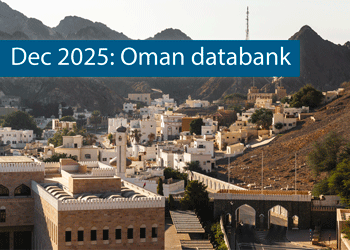 Oman’s growth forecast points upwards
Oman’s growth forecast points upwards24 December 2025
-
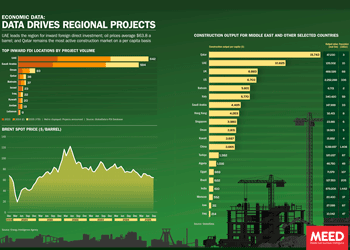 December 2025: Data drives regional projects
December 2025: Data drives regional projects23 December 2025
-
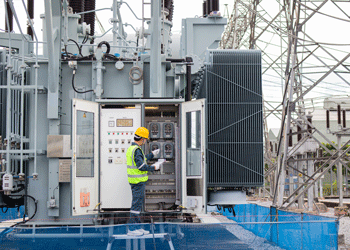 Local firm bids lowest for Kuwait substation deal
Local firm bids lowest for Kuwait substation deal22 December 2025
-
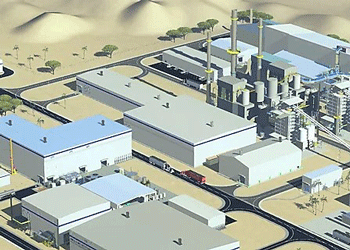 Saudi-Dutch JV awards ‘supercentre’ metals reclamation project
Saudi-Dutch JV awards ‘supercentre’ metals reclamation project22 December 2025
-
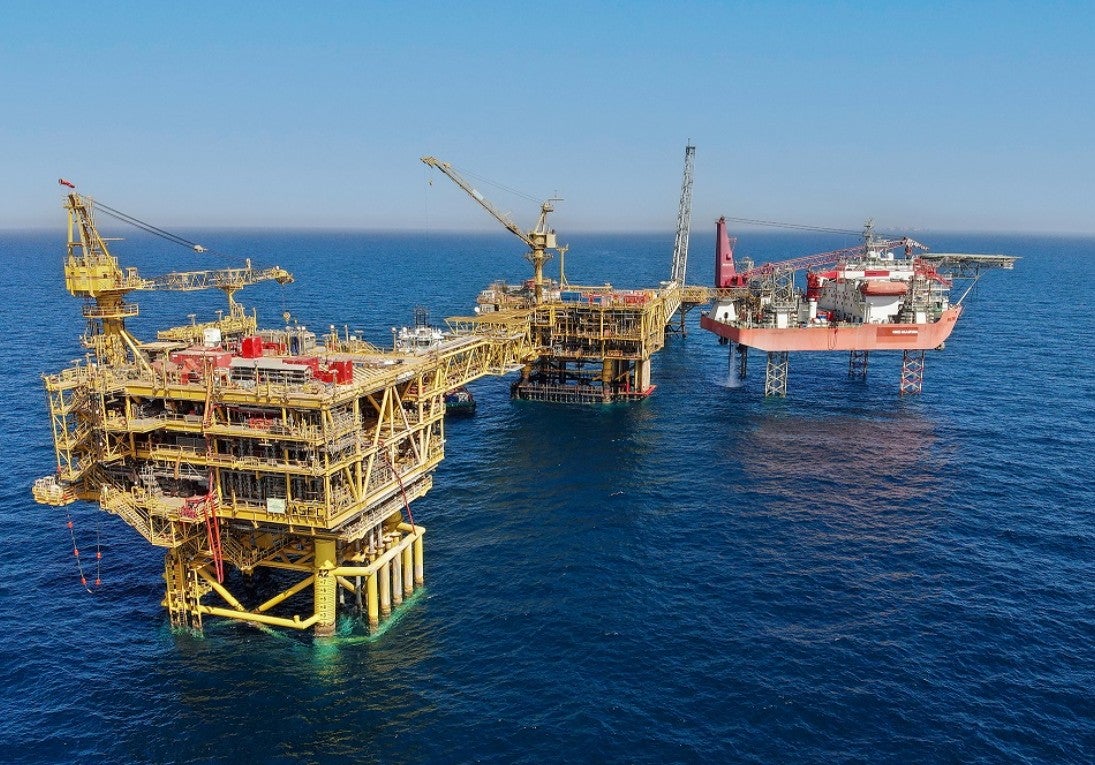 QatarEnergy LNG awards $4bn gas project package
QatarEnergy LNG awards $4bn gas project package22 December 2025
All of this is only 1% of what MEED.com has to offer
Subscribe now and unlock all the 153,671 articles on MEED.com
- All the latest news, data, and market intelligence across MENA at your fingerprints
- First-hand updates and inside information on projects, clients and competitors that matter to you
- 20 years' archive of information, data, and news for you to access at your convenience
- Strategize to succeed and minimise risks with timely analysis of current and future market trends

Related Articles
-
 Oman’s growth forecast points upwards
Oman’s growth forecast points upwards24 December 2025

MEED’s January 2026 report on Oman includes:
> COMMENT: Oman steadies growth with strategic restraint
> GVT & ECONOMY: Oman pursues diversification amid regional concerns
> BANKING: Oman banks feel impact of stronger economy
> OIL & GAS: LNG goals galvanise Oman’s oil and gas sector
> POWER & WATER: Oman prepares for a wave of IPP awards
> CONSTRUCTION: Momentum builds in construction sectorTo see previous issues of MEED Business Review, please click herehttps://image.digitalinsightresearch.in/uploads/NewsArticle/15306449/main.gif -
 December 2025: Data drives regional projects
December 2025: Data drives regional projects23 December 2025
Click here to download the PDF
Includes: Top inward FDI locations by project volume | Brent spot price | Construction output
MEED’s January 2026 report on Oman includes:
> COMMENT: Oman steadies growth with strategic restraint
> ECONOMY: Oman pursues diversification amid regional concerns
> BANKING: Oman banks feel impact of stronger economy
> OIL & GAS: LNG goals galvanise Oman’s oil and gas sector
> POWER & WATER: Oman prepares for a wave of IPP awards
> CONSTRUCTION: Momentum builds in construction sectorTo see previous issues of MEED Business Review, please click herehttps://image.digitalinsightresearch.in/uploads/NewsArticle/15306140/main.gif -
 Local firm bids lowest for Kuwait substation deal
Local firm bids lowest for Kuwait substation deal22 December 2025
The local Al-Ahleia Switchgear Company has submitted the lowest price of KD33.9m ($110.3m) for a contract to build a 400/132/11 kV substation at the South Surra township for Kuwait’s Public Authority for Housing Welfare (PAHW).
The bid was marginally lower than the two other offers of KD35.1m and KD35.5m submitted respectively by Saudi Arabia’s National Contracting Company (NCC) and India’s Larsen & Toubro.
PAHW is expected to take about three months to evaluate the prices before selecting the successful contractor.
The project is one of several transmission and distribution projects either out to bid or recently awarded by Kuwait’s main affordable housing client.
This year alone, it has awarded two contracts worth more than $100m for cable works at its 1Z, 2Z, 3Z and 4Z 400kV substations at Al-Istiqlal City, and two deals totalling just under $280m for the construction of seven 132/11kV substations in the same township.
Most recently, it has tendered two contracts to build seven 132/11kV main substations at its affordable housing project, west of Kuwait City. The bid deadline for the two deals covering the MS-01 through to MS-08 substations is 8 January.
https://image.digitalinsightresearch.in/uploads/NewsArticle/15305745/main.gif -
 Saudi-Dutch JV awards ‘supercentre’ metals reclamation project
Saudi-Dutch JV awards ‘supercentre’ metals reclamation project22 December 2025
The local Advanced Circular Materials Company (ACMC), a joint venture of the Netherlands-based Shell & AMG Recycling BV (SARBV) and local firm United Company for Industry (UCI), has awarded the engineering, procurement and construction (EPC) contract for the first phase of its $500m-plus metals reclamation complex in Jubail.
The contract, estimated to be worth in excess of $200m, was won by China TianChen Engineering Corporation (TCC), a subsidiary of China National Chemical Engineering Company (CNCEC), following the issue of the tender in July 2024.
Under the terms of the deal, TCC will process gasification ash generated at Saudi Aramco’s Jizan refining complex on the Red Sea coast to produce battery-grade vanadium oxide and vanadium electrolyte for vanadium redox flow batteries. AMG will provide the licensed technology required for the production process.
The works are the first of four planned phases at the catalyst and gasification ash recycling ‘Supercentre’, which is located at the PlasChem Park in Jubail Industrial City 2 alongside the Sadara integrated refining and petrochemical complex.
Phase 2 will expand the facility to process spent catalysts from heavy oil upgrading facilities to produce ferrovanadium for the steel industry and/or additional battery-grade vanadium oxide.
Phase 3 involves installing a manufacturing facility for residue-upgrading catalysts.
In the fourth phase, a vanadium electrolyte production plant will be developed.
The developers expect a total reduction of 3.6 million metric tonnes of carbon dioxide emissions a year when the four phases of the project are commissioned.
SARBV first announced its intention to build a metal reclamation and catalyst manufacturing facility in Saudi Arabia in November 2019. The kingdom’s Ministry of Investment, then known as the Saudi Arabian General Investment Authority (Sagia), supported the project.
In July 2022, SARBV and UCI signed the agreement to formalise their joint venture and build the proposed facility.
The project has received support from Saudi Aramco’s Namaat industrial investment programme. Aramco, at the time, also signed an agreement with the joint venture to offtake vanadium-bearing gasification ash from its Jizan refining complex.
Photo credit: SARBV
https://image.digitalinsightresearch.in/uploads/NewsArticle/15305326/main.gif -
 QatarEnergy LNG awards $4bn gas project package
QatarEnergy LNG awards $4bn gas project package22 December 2025
QatarEnergy LNG, a subsidiary of state-owned QatarEnergy, has awarded the main engineering, procurement, construction and installation (EPCI) contract for a major package for the second phase of its North Field Production Sustainability (NFPS) project.A consortium comprising the Italian contractor Saipem and state-owned China Offshore Oil Engineering Company (COOEC) has secured the EPCI contract for the COMP5 package. The contract value is $4bn, with Saipem declaring its share to be worth $3.1bn.
Milan-headquartered Saipem said the contract will run for about five years. The scope of work comprises engineering, procurement, fabrication and installation of two compression complexes, each including a compression platform, a living quarters platform, a flare platform supporting the gas combustion system, and the related interconnecting bridges. Each complex will have a total weight of about 68,000 tonnes.
Offshore installation operations will be carried out by Saipem’s De He construction vessel in 2029 and 2030.
MEED previously reported that the following contractors submitted bids for the NFPS phase two COMP5 package:
- Larsen & Toubro Energy Hydrocarbon (India)
- McDermott (US)
- Saipem/China Offshore Oil Engineering Company (Italy/China)
QatarEnergy LNG, formerly Qatargas, is said to have issued the tender for the NFPS phase two COMP5 package in the first quarter of the year.
Contractors submitted technical bids for the COMP5 package in late June, while commercial bids were submitted by 8 October, as per sources.
Based upon initial evaluation of bids by QatarEnergy LNG, L&TEH has emerged as the lowest bidder for the COMP5 package, followed by McDermott, with the consortium of Saipem and COOEC in third place, MEED reported in late October.
In the weeks following that, the project operator is said to have engaged all bidders for a final round of negotiations, during which the consortium of Saipem and COOEC is believed to have “clinched the deal”, according to sources.
The detailed scope of work on the COMP5 package covers the EPCI work on the following:
- Two gas compression platforms, each weighing 30,000-35,000 tonnes, plus jacket
- Two living quarters platforms, plus jacket
- Two gas flare platforms, plus jacket
- Brownfield modification work at two complexes
NFPS scheme
QatarEnergy’s North Field liquefied natural gas (LNG) expansion programme requires the state enterprise to pump large volumes of gas from the North Field offshore reserve to feed the three phases of the estimated $40bn-plus programme.
QatarEnergy has already invested billions of dollars in engineering, procurement and construction works on the two phases of the NFPS project, which aims to maintain steady gas feedstock for the North Field LNG expansion phases.
The second NFPS phase will mainly involve building gas compression facilities to sustain and gradually increase gas production from Qatar’s offshore North Field gas reserve over the long term.
Saipem has been the most successful contractor on the second NFPS phase, securing work worth a total of $8.5bn.
QatarEnergy LNG awarded Saipem a $4.5bn order in October 2022 to build and install gas compression facilities. The main scope of work on the package, which is known as EPCI 2, covers two large gas compression complexes that will comprise decks, jackets, topsides, interconnecting bridges, flare platforms, living quarters and interface modules.
The gas compression complexes – CP65 and CP75 – will weigh 62,000 tonnes and 63,000 tonnes, respectively, and will be the largest fixed steel jacket compression platforms ever built.
Following that, Saipem won combined packages COMP3A and COMP3B of the NFPS project’s second phase in September last year.
The scope of work on the combined packages encompasses the EPCI of a total of six platforms, approximately 100 kilometres (km) of corrosion resistance alloy rigid subsea pipelines of 28-inches and 24-inches diameter, 100km of subsea composite cables, 150km of fibre optic cables and several other subsea units.
Separately, QatarEnergy LNG awarded McDermott the contract for the NFPS second phase package known as EPCI 1, or COMP1, in July 2023. The scope of work on the estimated $1bn-plus contract is to install a subsea gas pipeline network at the North Field gas development.
In March this year, India’s Larsen & Toubro Energy Hydrocarbon (LTEH) won the main contract for the combined 4A and 4B package, which is the fourth package of the second phase of the NFPS project and is estimated to be valued at $4bn-$5bn.
The main scope of work on the package is the EPCI of two large gas compression systems that will be known as CP8S and CP4N, each weighing 25,000-35,000 tonnes. The contract scope also includes compression platforms, flare gas platforms and other associated structures.
LTHE sub-contracted detailed engineering and design works on the combined 4A and 4B package to French contractor Technip Energies.
NFPS first phase
Saipem is also executing the EPCI works on the entire first phase of the NFPS project, which consists of two main packages.
Through the first phase of the NFPS scheme, QatarEnergy LNG aims to increase the early gas field production capacity of the North Field offshore development to 110 million tonnes a year.
QatarEnergy LNG awarded Saipem the contract for the EPCI package in February 2021. The package is the larger of the two NFPS phase one packages and has a value of $1.7bn.
Saipem’s scope of work on the EPCI package encompasses building several offshore facilities for extracting and transporting natural gas, including platforms, supporting and connecting structures, subsea cables and anti-corrosion internally clad pipelines.
The scope of work also includes decommissioning a pipeline and other significant modifications to existing offshore facilities.
In addition, in April 2021, QatarEnergy LNG awarded Saipem two options for additional work within the EPCI package, worth about $350m.
QatarEnergy LNG awarded Saipem the second package of the NFPS phase one project, estimated to be worth $1bn, in March 2021.
Saipem’s scope of work on the package, which is known as EPCL, mainly covers installing three offshore export trunklines running almost 300km from their respective offshore platforms to the QatarEnergy LNG north and south plants located in Ras Laffan Industrial City.
Saipem performed the front-end engineering and design work on the main production package of the first phase of the NFPS as part of a $20m contract that it was awarded in January 2019. This provided a competitive advantage to the Italian contractor in its bid to win the package.
https://image.digitalinsightresearch.in/uploads/NewsArticle/15305330/main2239.jpg

